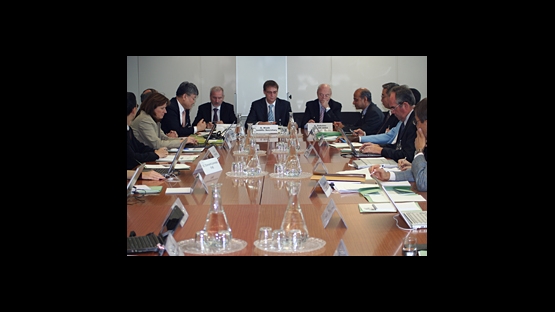Fusion, a form of nuclear energy created by the merging of light atoms, could provide the world with a safe, environmentally responsible and abundant source of energy. However, one of the greatest challenges faced by the scientific community today is demonstrating the scientific and technological feasibility of harnessing the power nuclear fusion generates.
To better tackle this challenge, the international fusion community is joining forces and stepping up collaboration, particularly around the International Thermonuclear Experimental Reactor (ITER), the world´s first demonstration reactor for fusion power currently under construction in the South of France.
ITER and the IAEA are implementing a cooperative agreement, signed last October, where both organizations exchange information regarding the study and potential application of fusion energy, participate in each other´s meetings and organize joint scientific conferences. The agreement also includes cooperation on training, publications, plasma physics and modelling, and fusion safety and security. In addition, the IAEA has a fusion programme which focuses on increasing international cooperation and support for science and technology for fusion power.
"The Member States of the IAEA are showing interest in the new results emerging through the framework of International Tokamak Physics Activity (ITPA) meetings," noted Yury Sokolov, IAEA Deputy Director General for Nuclear Energy at the last International Fusion Research Council Meeting in Vienna.
One of the most visible physics-related activities of ITER, the ITPA provides essential support to ITER activities in addressing key R&D needs.
"Through its involvement in IAEA activities ITER has a good opportunity to address the interest of other member countries," added ITER Director General Kaname Ikeda. "There is nothing to be gained by being exclusive; scientific knowledge should be shared with the scientific community worldwide."
Fusion and Fission
Another important avenue for increased collaboration is cooperation between fusion and fission experts, particularly those working on nuclear power and fuel cycle development. Collaboration in cross-cutting issues, like research on radiation damage under high dose irradiation, benefits both communities.
To help support such collaboration, the IAEA promotes close cooperation among its programmes and has begun to organize meetings on common areas of interest, like the development of new structural materials for advanced fission and fusion reactor systems.
Background
The International Fusion Research Council (IFRC) was created in 1972 to advise the Director General of the IAEA on matters relating to the Agency´s controlled nuclear fusion programme and to promote international cooperation in this field. It meets annually and consists of 10 to 15 members, who serve in their individual capacities. The IFRC last met in Vienna, Austria, on 14 October 2009.
ITER is the world´s first demonstration reactor for fusion power. It is being built in Cadarache in the South of France as a joint venture between China, the European Union, India, Japan, the Republic of Korea, the Russian Federation and the USA.


